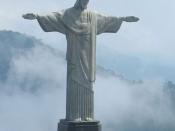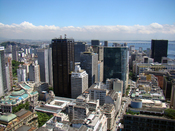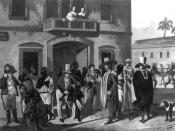Resource Shortage: The Forests of Rio de Janeiro
Rio de Janeiro is the second larges metropolis in Brazil and home to 11 million people. The rapid growth in the population of Rio de Janeiro has caused deforestation and degradation of the land and therefore, resulted in serious ecological and natural resource issues. Many areas of Rio de Janeiro have adopted programs aimed at resolving these issues and making the land sustainable for future generations.
The Problem
Decades of logging, sugarcane harvesting, cattle breeding, and most recently coffee cultivation has resulted in the degradation of more than 1/5 of Rio de Janeiro's land (Haberle and Laar, 2003). Rio de Janeiro, which is located in the domain of the Mata Atlântica Forest, has been the victim of deforestation of such proportions that only 10% of its territory is still covered by native forest (Haberle and Laar, 2003). This fact has had a devastating effect on Rio de Janeiro's ecosystem.
Much of the growing population lives in poverty-stricken settlements known as favelas on deforested hillsides. The degradation of the land in these areas causes instability that results in landslides, mudslides, and rockfalls that kill hundreds of people every year (Siegel, n.d.).
Further complications in these deforested areas have arisen from the growth of a type of grass known as capim-colonião, which strangles growth of the remaining trees and is highly susceptible to fires. The lack of trees has caused the water tables to fall resulting in a lack of water for the population (Haberle and Laar, 2003). The water that is present is in the form of mud left from the landslides, which only serves as breeding grounds for disease carrying mosquitoes (Siegel, n.d.). The lack of water and food and the level of poverty suffered by the people of Rio de Janeiro...


